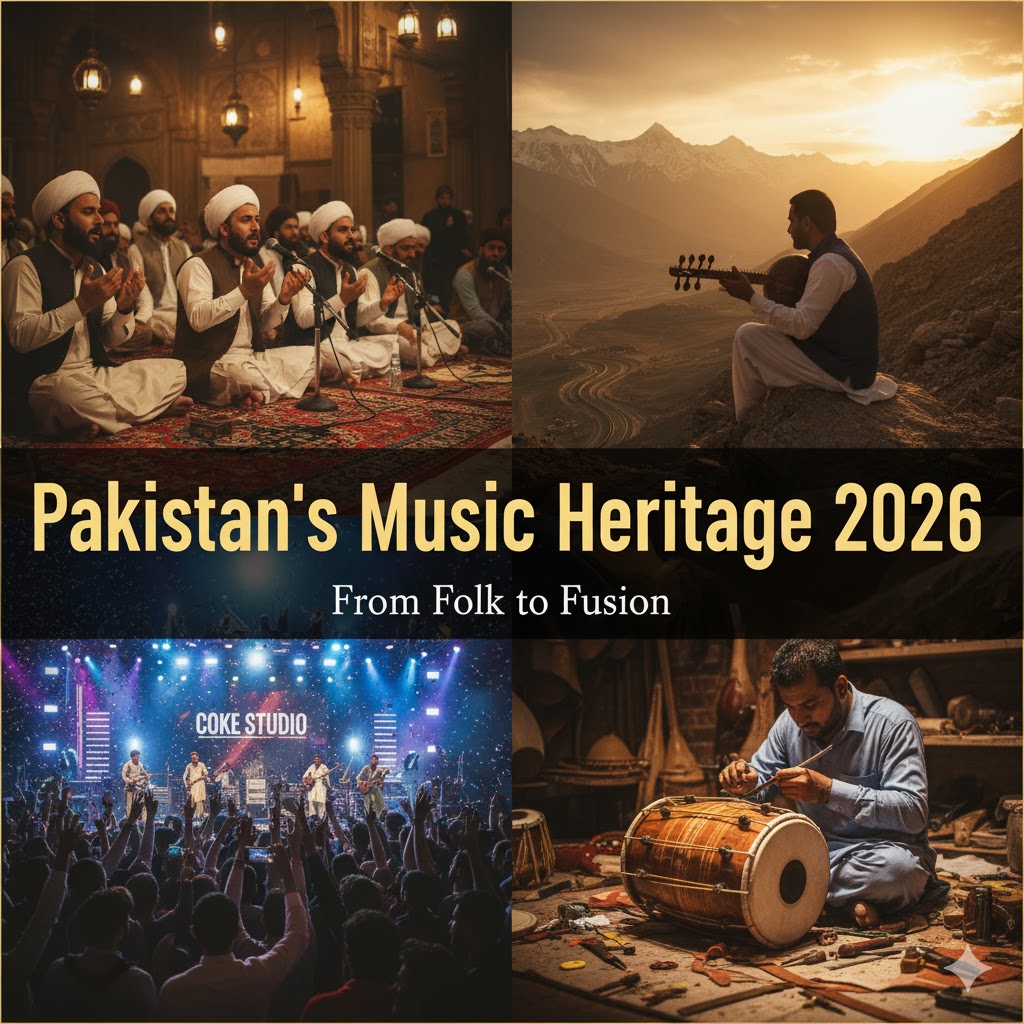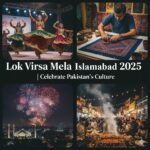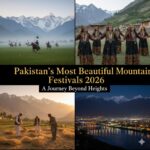Introduction — The Melody of a Nation
Music in Pakistan is more than entertainment — it is the heartbeat of its history, culture, and spirituality. From the mystical Sufi shrines echoing with qawwali chants to contemporary bands blending folk with rock, Pakistan music heritage tells the story of resilience, unity, and passion.
Over centuries, music has evolved here through cultural intersections — Persian, Central Asian, Indian, and indigenous influences blending into one rich tapestry of rhythm. Whether it’s the hypnotic beats of a dhol, the soulful rubab, or the electrifying strings of a modern guitar, Pakistan’s music speaks a universal language of emotion.
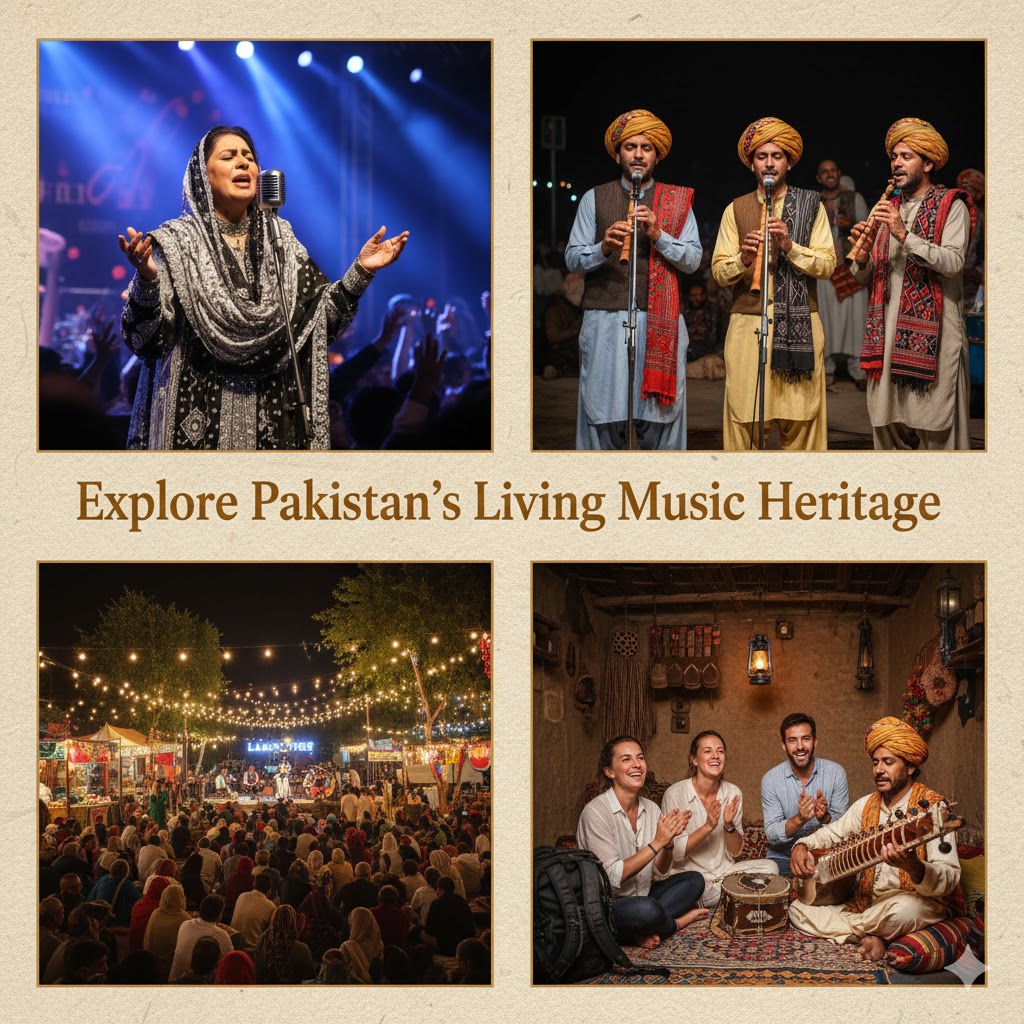
🏛️ 1. Historical Roots — From Ancient Rhythms to Modern Resonance
The origins of Pakistani music trace back to the Indus Valley Civilization, where early instruments like flutes and drums were carved from clay and wood. As centuries passed, the region became a melting pot of diverse influences: Persian ghazals, Turkic rhythms, Indian ragas, and local tribal beats.
During the Mughal era, music gained sophistication with the rise of classical traditions like khayal and thumri. Post-independence, artists like Noor Jehan, Roshan Ara Begum, and Nusrat Fateh Ali Khan became cultural icons, carrying forward centuries of melodic heritage while defining Pakistan’s modern identity.
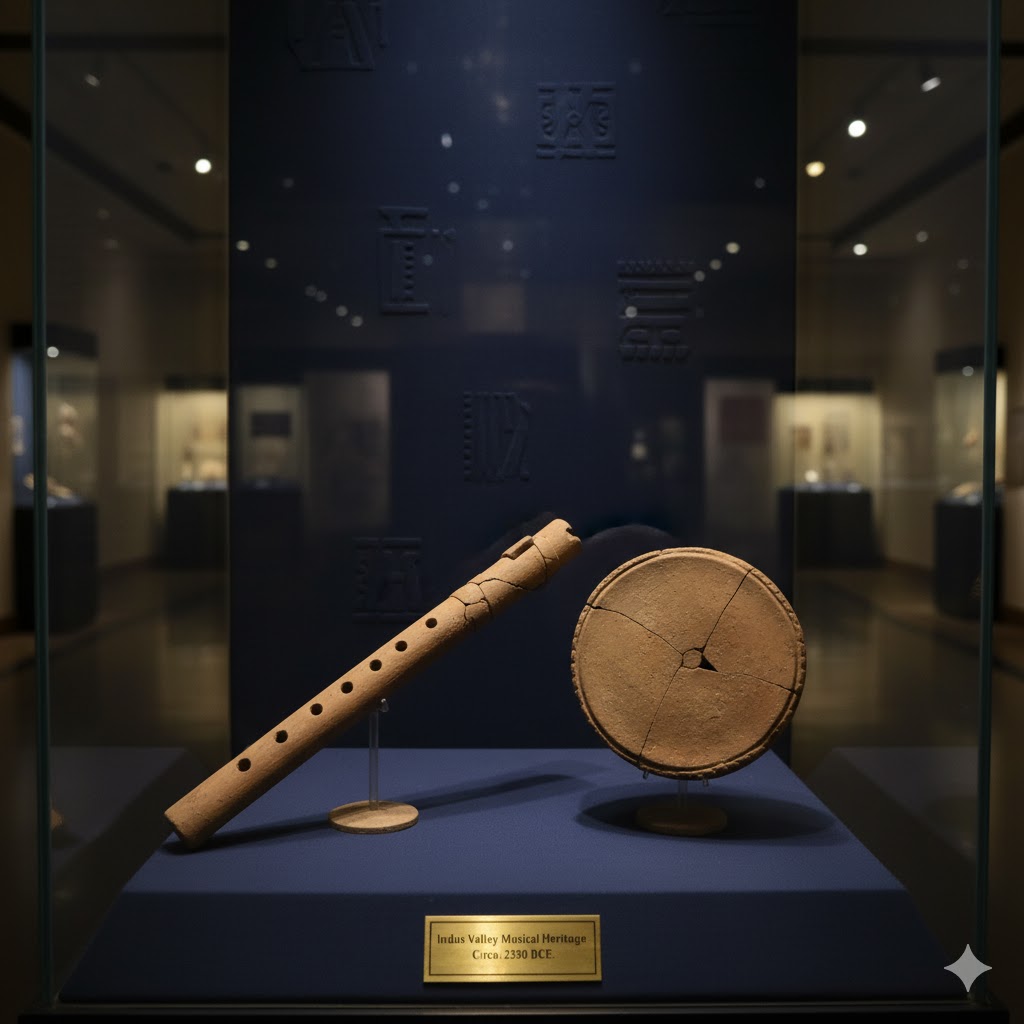
🎤 2. The Pillars of Pakistani Folk Music
Folk music remains the most authentic reflection of Pakistan’s cultural diversity. Each province contributes its unique rhythms, stories, and instruments.
🎶 Punjabi Folk — Dhol Beats & Bhangra Spirit
Characterized by energetic bhangra, tappa, and jugni songs, Punjabi folk music expresses joy, love, and harvest celebrations. Artists like Alam Lohar and Arif Lohar popularized the chimta as a signature instrument.
🌾 Sindhi Folk — Ajrak of Sound
Rooted in spirituality, Sindhi music features instruments like Yaktaro and Borindo, with poets like Shah Abdul Latif Bhittai inspiring melodies of divine love.
🏔️ Pashto & Balochi Folk — Rhythms of the Hills and Deserts
Pashto music, rich with rubab and mangay, celebrates valor and love, while Balochi tunes use suroz and tamburag to narrate legends of nomadic life.
❄️ Gilgit-Baltistan & Kashmir — Songs of Serenity
Soft, haunting melodies featuring souse, damyo, and flute capture the region’s serene landscapes and spiritual calm.
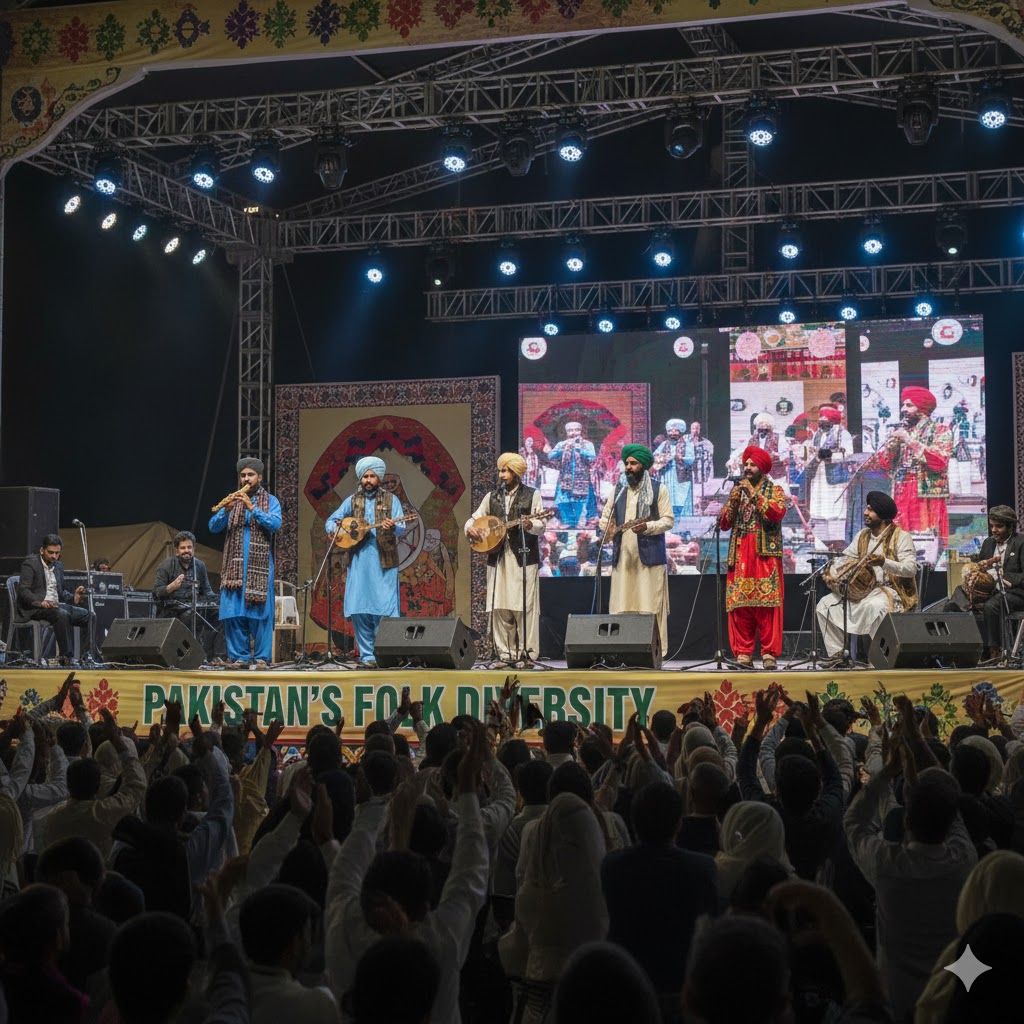
🎧 3. The Spiritual Soundscape — Sufi Music and Qawwali
No musical heritage in Pakistan is complete without Sufi music, the mystical expression of divine love and human devotion.
Originating in the shrines of Lahore, Multan, Sehwan, and Pakpattan, qawwali has been an integral part of spiritual gatherings for centuries.
Key Elements of Sufi Music:
- Qawwali Ensembles: Harmonium, tabla, and clapping rhythms accompanying poetic verses.
- Themes: Love, unity, devotion, and spiritual awakening.
- Notable Artists: Nusrat Fateh Ali Khan, Abida Parveen, Sabri Brothers.
- Famous Shrines for Live Qawwali: Data Darbar (Lahore), Sehwan Sharif (Sindh), Bahauddin Zakariya (Multan).
Sufi music transcends religious and linguistic boundaries, creating a meditative bridge between sound and soul.
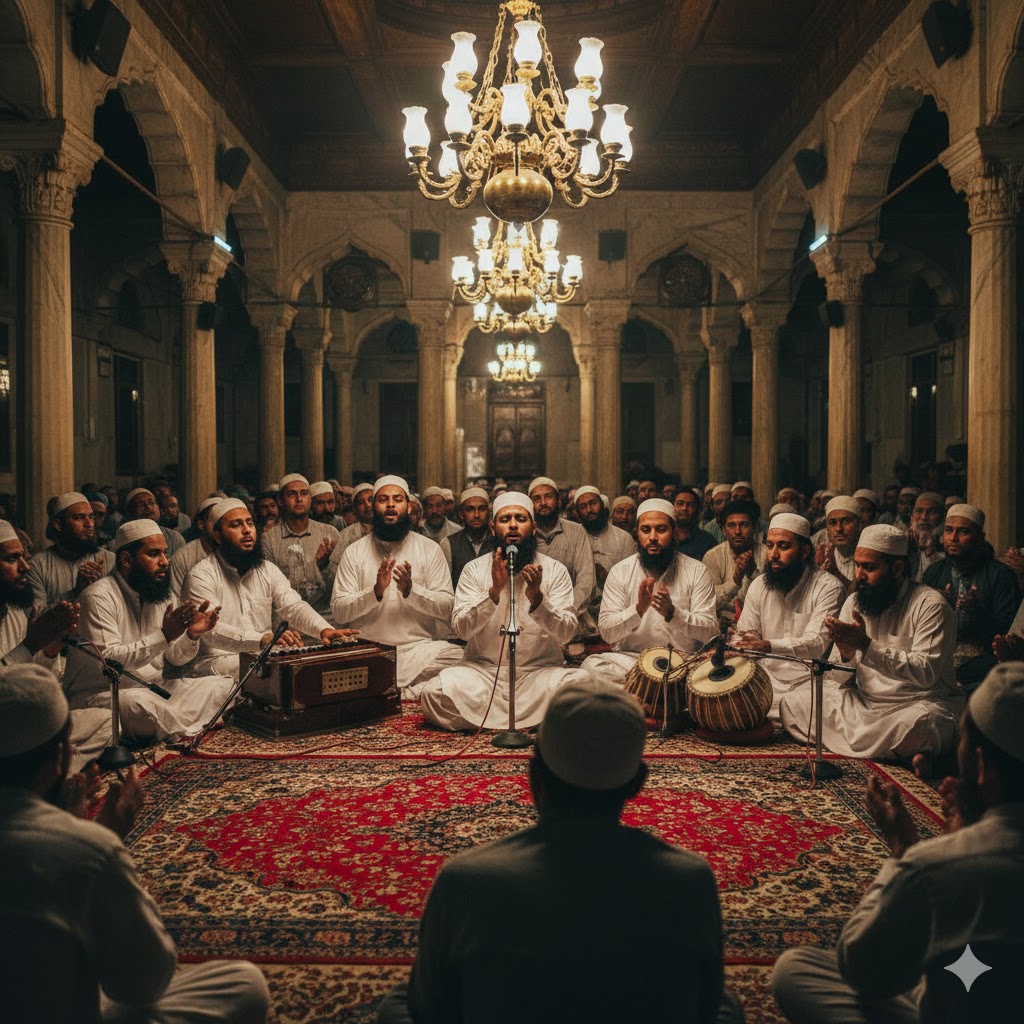
4. The Classical Traditions — Ustad, Raga, and Legacy
Pakistan’s classical music roots run deep, forming the technical and emotional foundation for nearly every genre that followed. Derived from the ancient Hindustani classical system, it emphasizes raga (melody) and taal (rhythm) — both forming the core of traditional South Asian musicology.
🎼 Key Forms of Classical Music in Pakistan
- Khayal: Expressive vocal improvisation based on complex ragas.
- Thumri: Romantic and lyrical compositions that showcase emotional depth.
- Dhrupad: One of the oldest surviving classical forms, known for spiritual intensity.
- Ghazal: Poetic and melodic, blending classical technique with emotional storytelling.
🎙️ Pioneering Classical Maestros
- Roshan Ara Begum — often called the Queen of Classical Music, she represented the Patiala Gharana.
- Ustad Salamat Ali Khan — a powerhouse of vocal improvisation.
- Ustad Fateh Ali Khan — elevated classical performance to international platforms.
Today, organizations like Alhamra Arts Council (Lahore) and Lok Virsa (Islamabad) continue to host annual classical music festivals, ensuring these timeless traditions remain alive for younger generations.
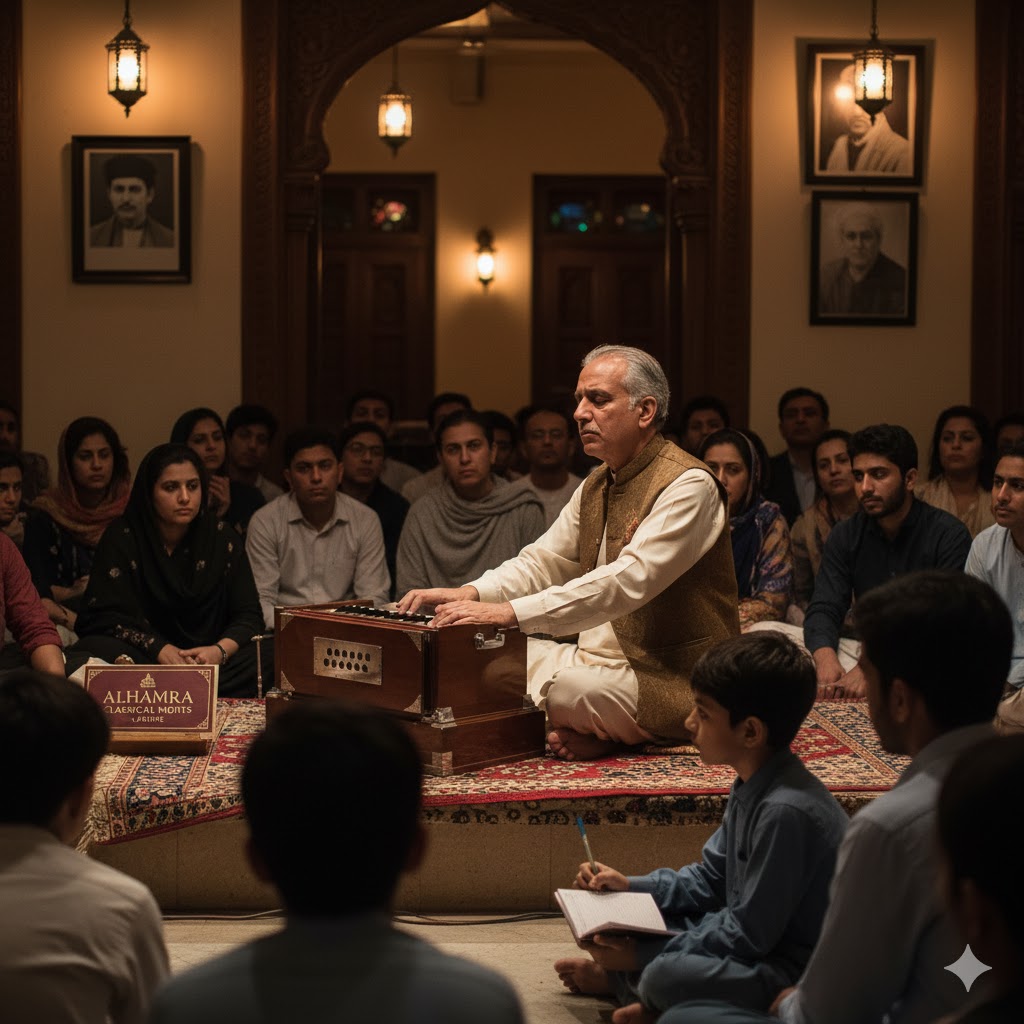
🪕 5. Traditional Instruments — The Sound of Soil
Each instrument in Pakistan carries a story — born from geography, culture, and craftsmanship. From the thunderous dhols of Punjab to the soft strings of rubab in Khyber Pakhtunkhwa, these instruments define Pakistan’s sonic identity.
| Instrument | Region | Description |
|---|---|---|
| Dhol | Punjab, Sindh | Large two-sided drum used in festivals and weddings. |
| Rubab | Khyber Pakhtunkhwa | Lute-like instrument producing deep, soulful tones. |
| Algoza | Sindh, Punjab | Dual flute played simultaneously to create rhythmic melodies. |
| Suroz | Balochistan | Bowed string instrument with haunting, desert-inspired tones. |
| Chimta | Punjab | Percussive tong-like metal instrument used in bhangra. |
| Bansuri | Northern Pakistan | Bamboo flute linked with serenity and spirituality. |
Modern bands often fuse these instruments with electric guitars and synths, creating a Pakistani fusion sound that’s gaining global attention.
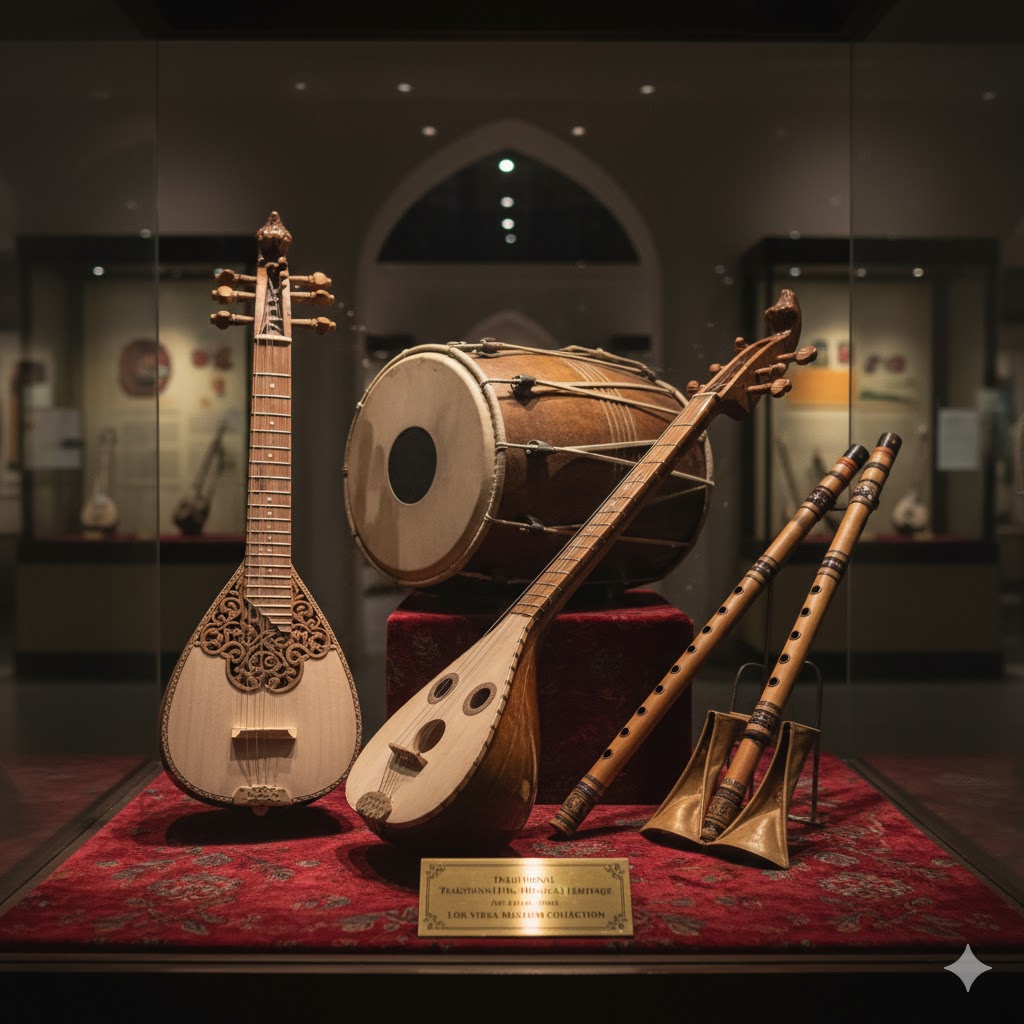
🎤 6. Legendary Voices — Icons Who Defined Pakistani Music
Few nations have produced as many timeless voices as Pakistan. From emotional ghazals to electrifying qawwalis, these singers have shaped both national identity and global perception of Pakistani art.
🎶 Golden-Era Icons
- Noor Jehan — “Malika-e-Tarannum,” the Queen of Melody whose patriotic songs still echo during national events.
- Mehdi Hassan — the undisputed King of Ghazal, revered for his unmatched vocal depth.
- Farida Khanum — introduced elegance and grace in ghazal singing.
- Iqbal Bano — her rendition of Hum Dekhenge remains an anthem of resilience.
🌍 Global Legends
- Nusrat Fateh Ali Khan — Pakistan’s greatest cultural ambassador, whose qawwalis reached the world stage.
- Abida Parveen — mystical Sufi powerhouse, blending feminine strength with divine expression.
- Junoon (Ali Azmat) — pioneers of Sufi rock, merging tradition with modern energy.
Reference: Nusrat Fateh Ali Khan’s official profile at Smithsonian Folkways
Read More: Explore Pakistan’s Sufi Heritage Walks in Multan
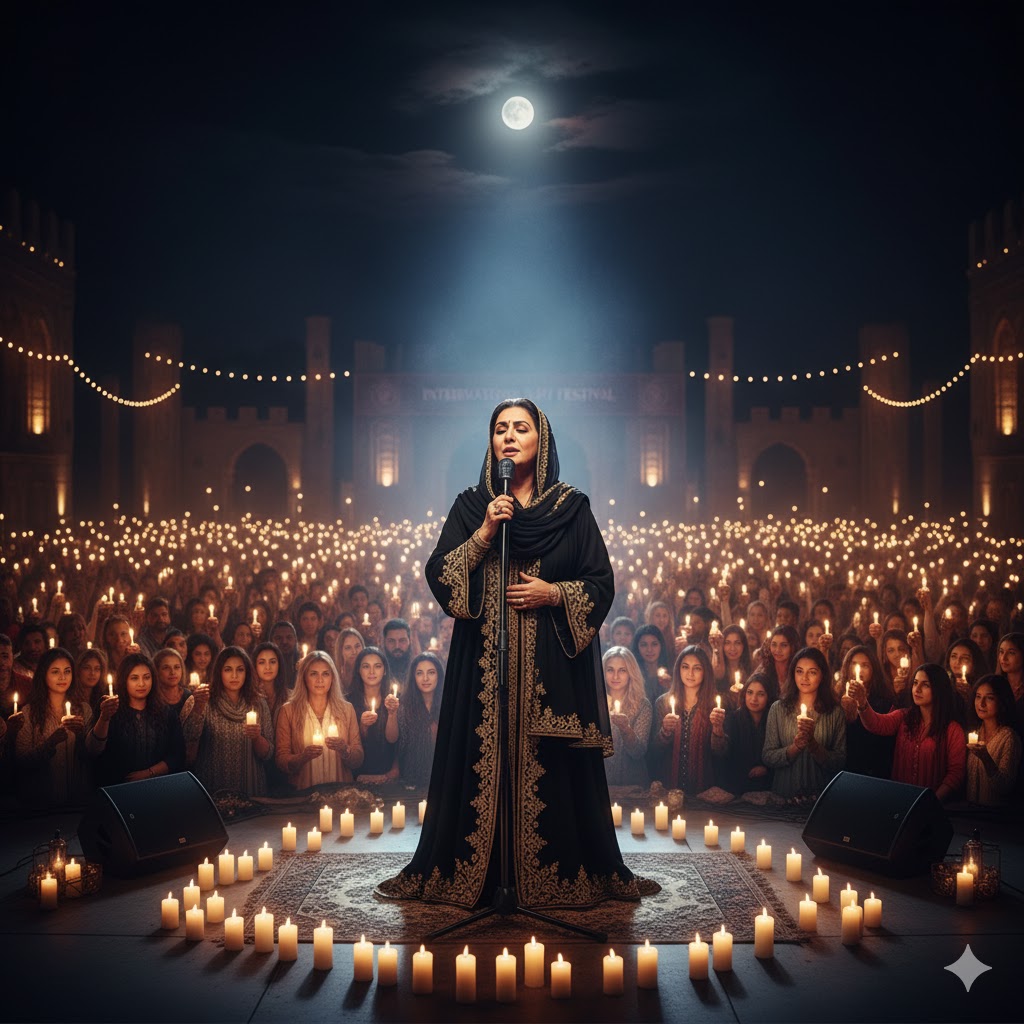
🎚️ 7. The Fusion Era — Coke Studio & Beyond
In the early 2000s, Pakistan’s music underwent a revolution through fusion platforms like Coke Studio, Nescafé Basement, and Pepsi Battle of the Bands. These projects bridged generations — uniting folk traditions with modern pop and rock.
Signature Elements of Fusion Music in Pakistan:
- Cultural Collaboration: Folk artists performing alongside pop musicians.
- Modern Storytelling: Use of ancestral poetry with digital production.
- Diversity in Voices: Regional languages (Balochi, Pashto, Punjabi) brought to mainstream.
Some of the most iconic tracks include Tajdar-e-Haram, Afreen Afreen, and Alif Allah Chambe Di Booti — timeless examples of how Pakistan’s music honors the past while embracing the future.
External DoFollow Link: Coke Studio Pakistan Official YouTube Channel
Internal Link: Read our Bahawalpur Travel Guide 2026
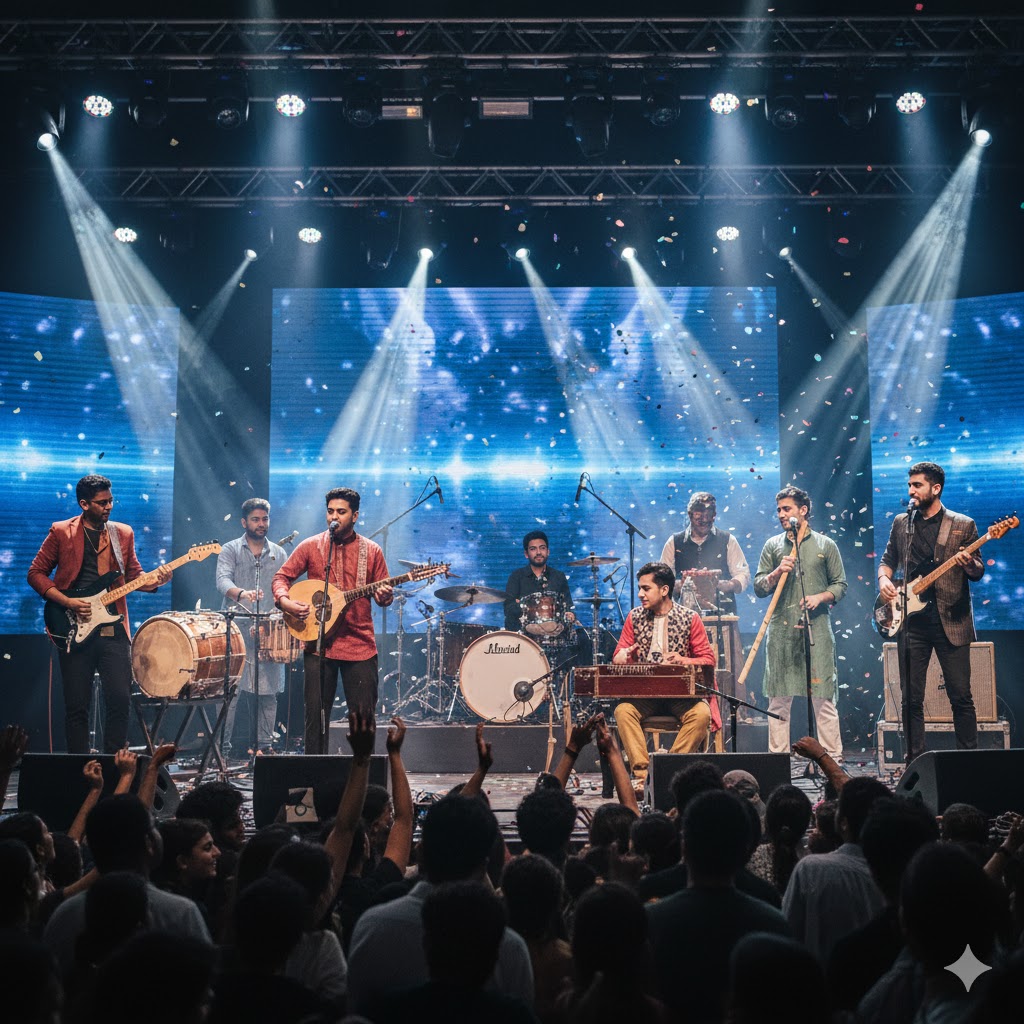
8. Modern Music Scene — Voices of a New Generation
Today’s Pakistani music scene thrives at the intersection of tradition and innovation. The new generation of artists is reshaping soundscapes by merging indigenous instruments with global beats — redefining how the world perceives Pakistani art.
🌟 Key Modern Artists Leading the Wave
- Atif Aslam – from soulful romantic ballads to spiritual renditions, his voice bridges East and West.
- Ali Sethi – known for reinventing classical poetry through experimental and fusion compositions.
- Arooj Aftab – Grammy-winning artist blending minimalism, Urdu ghazal, and electronic soundscapes.
- Young Stunners & Talha Anjum – pioneers of Urdu rap, giving voice to urban youth culture.
- Bayaan & Karakoram – alternative rock bands reviving Pakistan’s rock legacy with lyrical depth.
Streaming platforms like Spotify, SoundCloud, and YouTube have opened global doors, allowing Pakistani artists to reach millions without traditional media.
Source: Arooj Aftab’s Spotify Artist Page
Read More: Explore Pakistan’s Cultural Festivals Guide
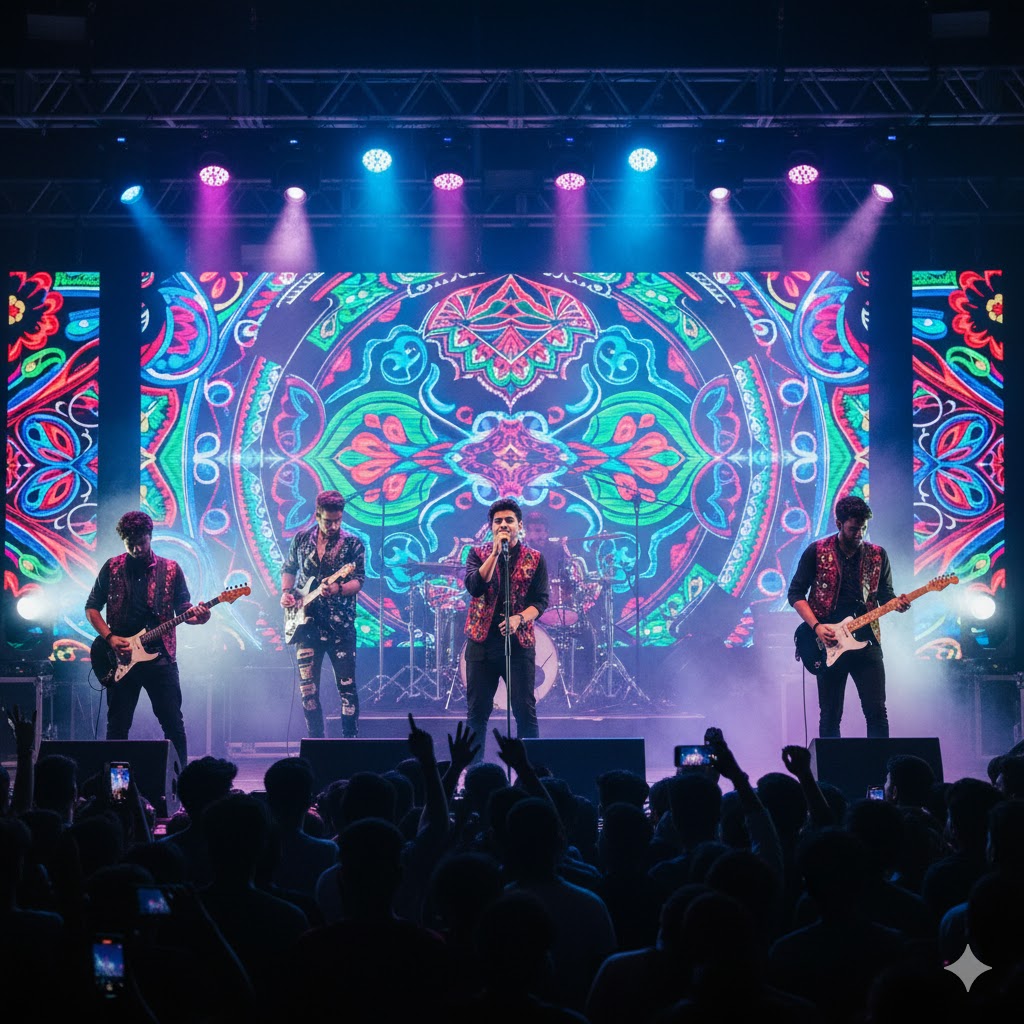
🎶 9. Major Music Festivals & Cultural Events Across Pakistan
Pakistan hosts a variety of music and cultural festivals that celebrate both heritage and innovation — offering travelers a chance to experience sound in its purest form.
🎤 1. Lahooti Melo (Hyderabad, Sindh)
A fusion of traditional and contemporary performances, this festival showcases social themes, women empowerment, and indigenous instruments.
🏕️ 2. Music Mela (Islamabad)
Organized by the Foundation for Arts, Culture & Education (FACE), it brings together folk musicians, indie bands, and classical maestros in one space.
🌆 3. Karachi Music Festival
Held annually, it features film music tributes, orchestra nights, and emerging artists’ showcases.
🎸 4. Lahore Music Meet (LMM)
An urban hub for artists and fans, offering panel discussions, workshops, and stage performances that spotlight Pakistan’s evolving sound.
🕊️ 5. Sufi Festivals at Shrines (Nationwide)
Events like Urs of Shah Abdul Latif Bhittai and Sehwan Sharif Mela echo with qawwali sessions that continue from dusk till dawn — a spiritual connection through music.
Source: Lahooti Melo Official Website
Read More: Lok Virsa Mela Islamabad 2025 Guide
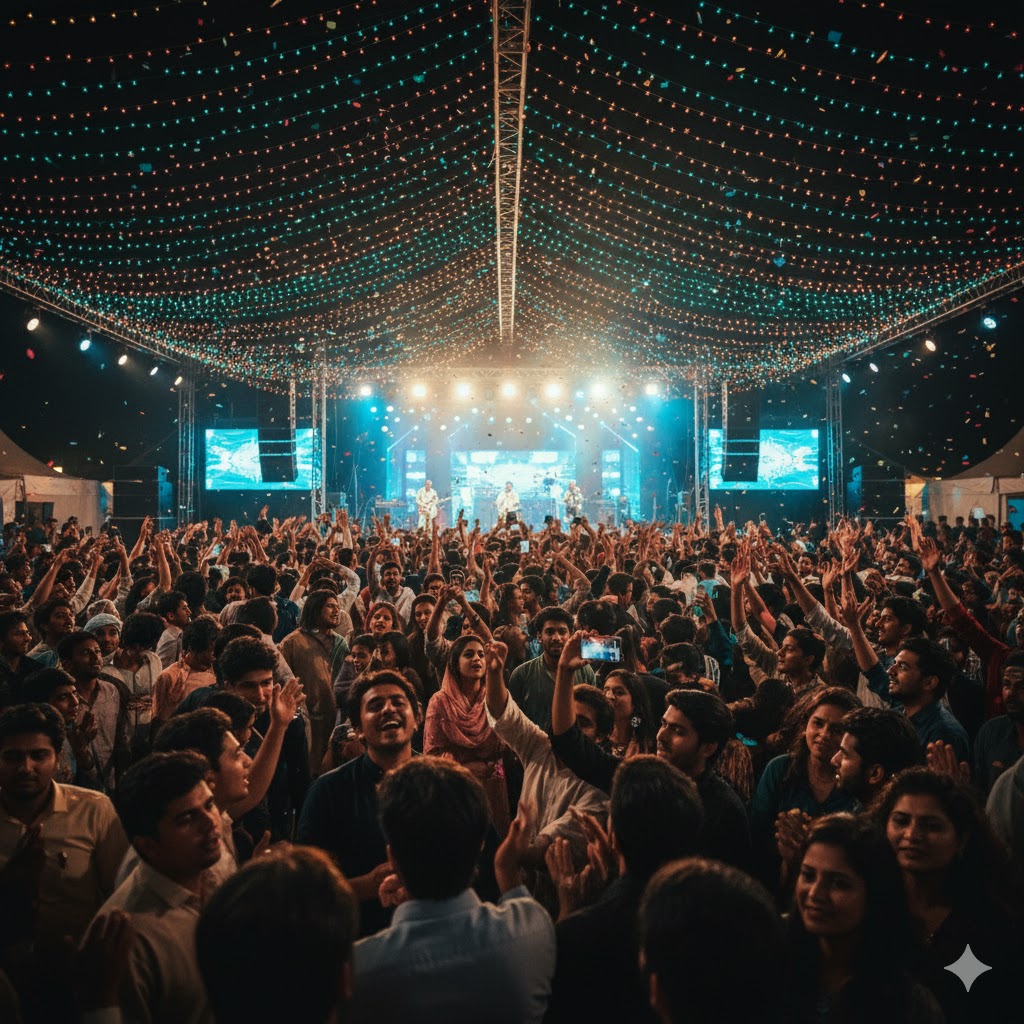
🌍 10. Global Influence — Taking Pakistan’s Sound to the World
Pakistani musicians are not just preserving culture — they’re exporting it. Through collaborations, digital platforms, and international tours, the country’s soundscape has found recognition across continents.
✈️ Global Collaborations & Achievements
- Nusrat Fateh Ali Khan’s collaborations with Peter Gabriel and Eddie Vedder introduced qawwali to global audiences.
- Junoon’s “Sayonee” and Coke Studio’s “Afreen Afreen” went viral internationally.
- Arooj Aftab won Pakistan’s first-ever Grammy Award (2022) for Best Global Music Performance.
- Coke Studio Season 14 reached 1 billion views on YouTube — redefining cultural pride through sound.
🌐 Cultural Diplomacy Through Music
Pakistan’s embassies and cultural attachés now promote folk and fusion artists globally, organizing “Pakistan Music Nights” in cities like London, New York, and Dubai — highlighting the message of peace and unity.
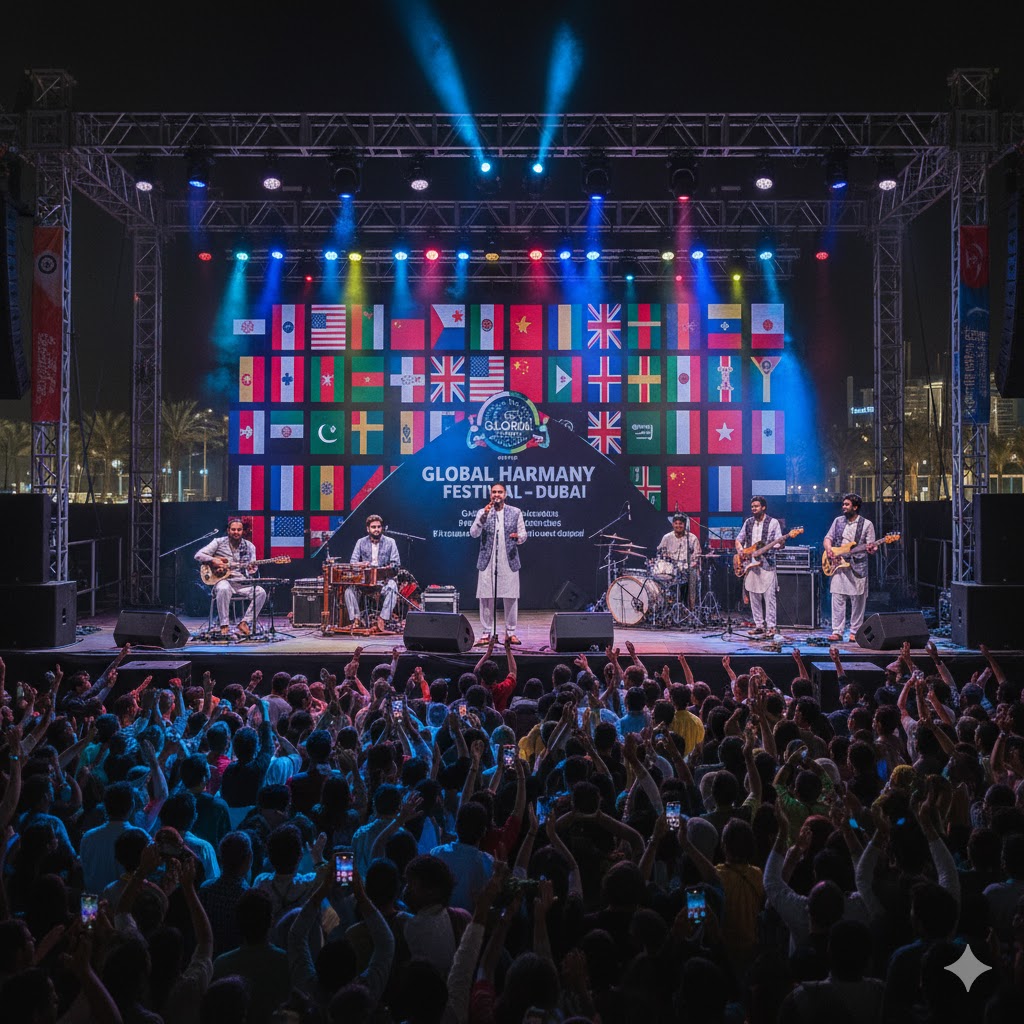
🏛️ 11. Preservation Efforts — Keeping the Beat Alive
As modernization and digital trends evolve, several institutions and NGOs are actively preserving traditional Pakistani music for future generations.
🪕 Key Preservation Organizations:
- Lok Virsa – National Institute of Folk & Traditional Heritage (Islamabad): Archiving regional music and organizing cultural training.
- All Pakistan Music Conference (Lahore): Promoting classical and semi-classical traditions since 1959.
- The Citizens Archive of Pakistan (CAP): Digitizing historic recordings and oral histories.
- Foundation for Arts, Culture & Education (FACE): Supporting folk artists in rural areas through grants and training.
Modern initiatives also include university courses, digital archives, and YouTube channels dedicated to folk preservation — bridging the gap between the past and the present.
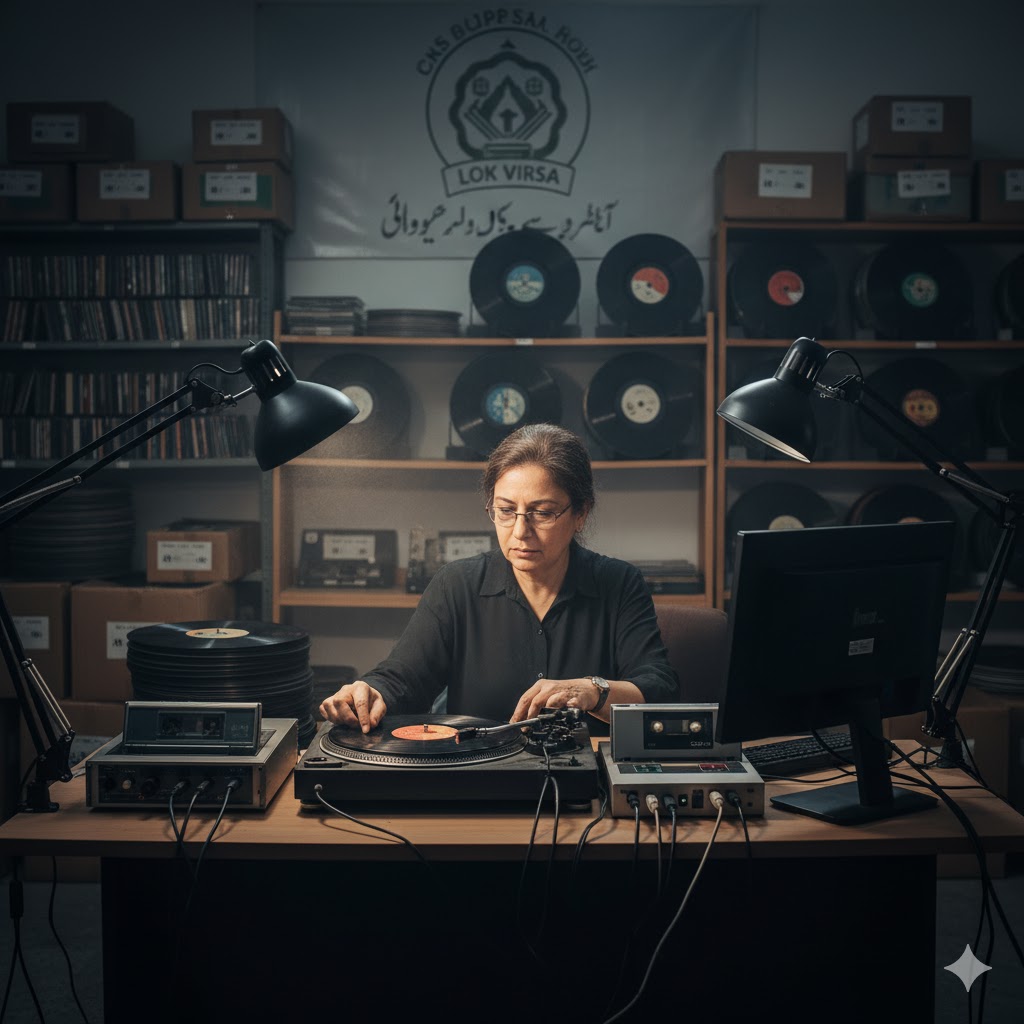
12. Experiencing Pakistan’s Music Heritage as a Traveler
To truly understand Pakistan’s music heritage, one must feel it — in shrines, streets, festivals, and mountains. Music here isn’t confined to concert halls; it lives in open courtyards, village gatherings, and spiritual spaces where rhythm connects hearts.
🕌 Sufi Shrines (Lahore, Multan, Sehwan)
Visit during Thursday nights when qawwali sessions echo through shrines like Data Darbar, Shah Rukn-e-Alam, and Lal Shahbaz Qalandar. The chants, harmoniums, and tabla beats create a transcendental energy you won’t find anywhere else.
🎪 Cultural Festivals (Islamabad, Hyderabad, Lahore)
Attend Lok Virsa Mela, Lahooti Melo, and Lahore Music Meet for a blend of folk and fusion. These events unite Pakistan’s diverse sounds — from the tribal suroz to electric guitar solos.
🏞️ Mountain Folk Sessions (Hunza, Skardu)
Local cafés and lodges host traditional rubab performances against breathtaking backdrops of the Karakoram peaks. Many travelers describe these nights as “the soul of northern Pakistan.”
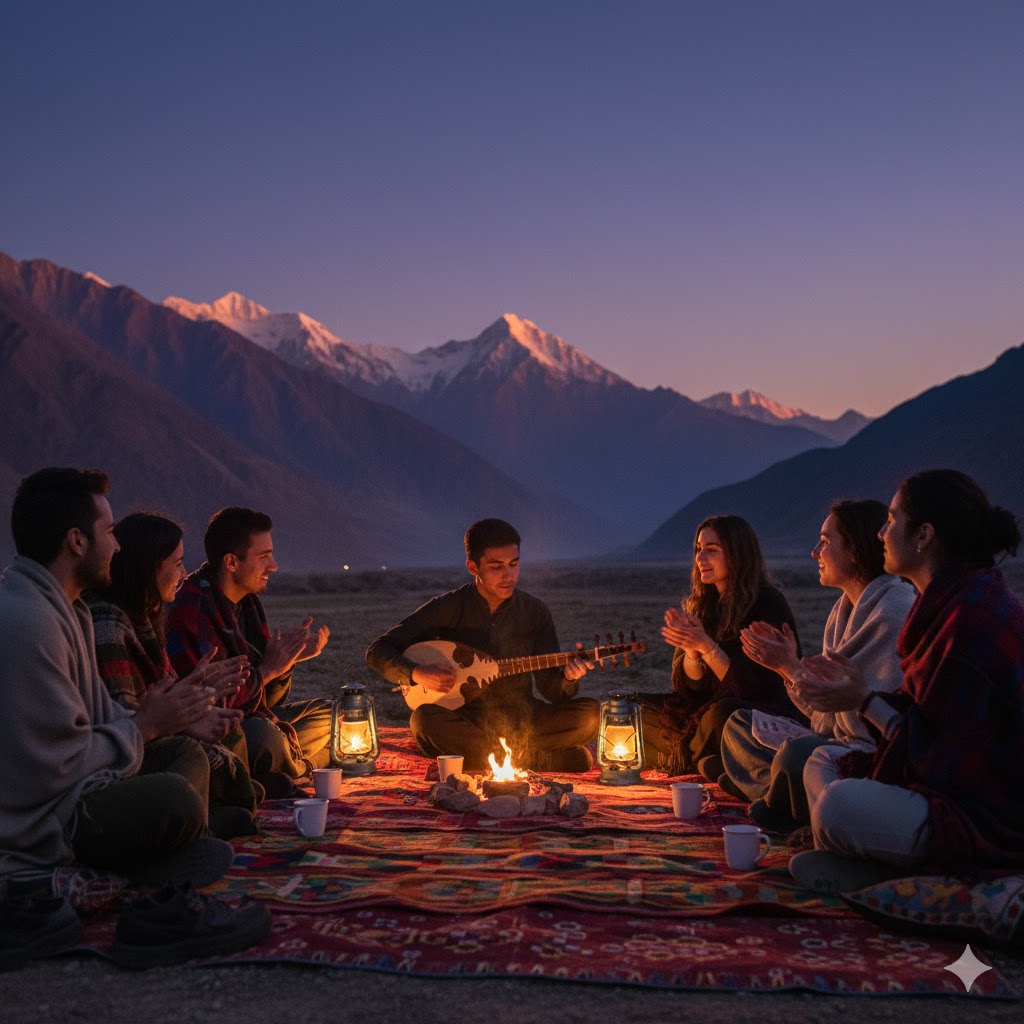
🎟️ 13. Best Time to Experience Music Events
| Region | Event/Season | Best Months to Visit |
|---|---|---|
| Punjab | Urs festivals, cultural nights | February – April |
| Sindh | Lahooti Melo, Sehwan Urs | March & November |
| Khyber Pakhtunkhwa | Folk nights, rubab sessions | May – September |
| Northern Areas | Tourism + folk events | June – August |
| Islamabad | Lok Virsa Mela, Music Mela | November |
Travelers planning a musical journey should combine these events with visits to heritage sites, museums, and artisan markets to experience the full rhythm of Pakistan’s living traditions.
🪩 14. Music-Themed Experiences to Try
- Attend a qawwali night at Data Darbar or Shah Jamal, Lahore.
- Take a folk instrument workshop at Lok Virsa Heritage Museum.
- Join a music photography walk in Karachi or Lahore.
- Buy handmade instruments from craftsmen in Hyderabad and Peshawar.
- Experience a rooftop jazz-fusion concert in Islamabad’s arts cafes.
These experiences not only connect you to sound but also to the craftspeople and communities who sustain Pakistan’s creative spirit.
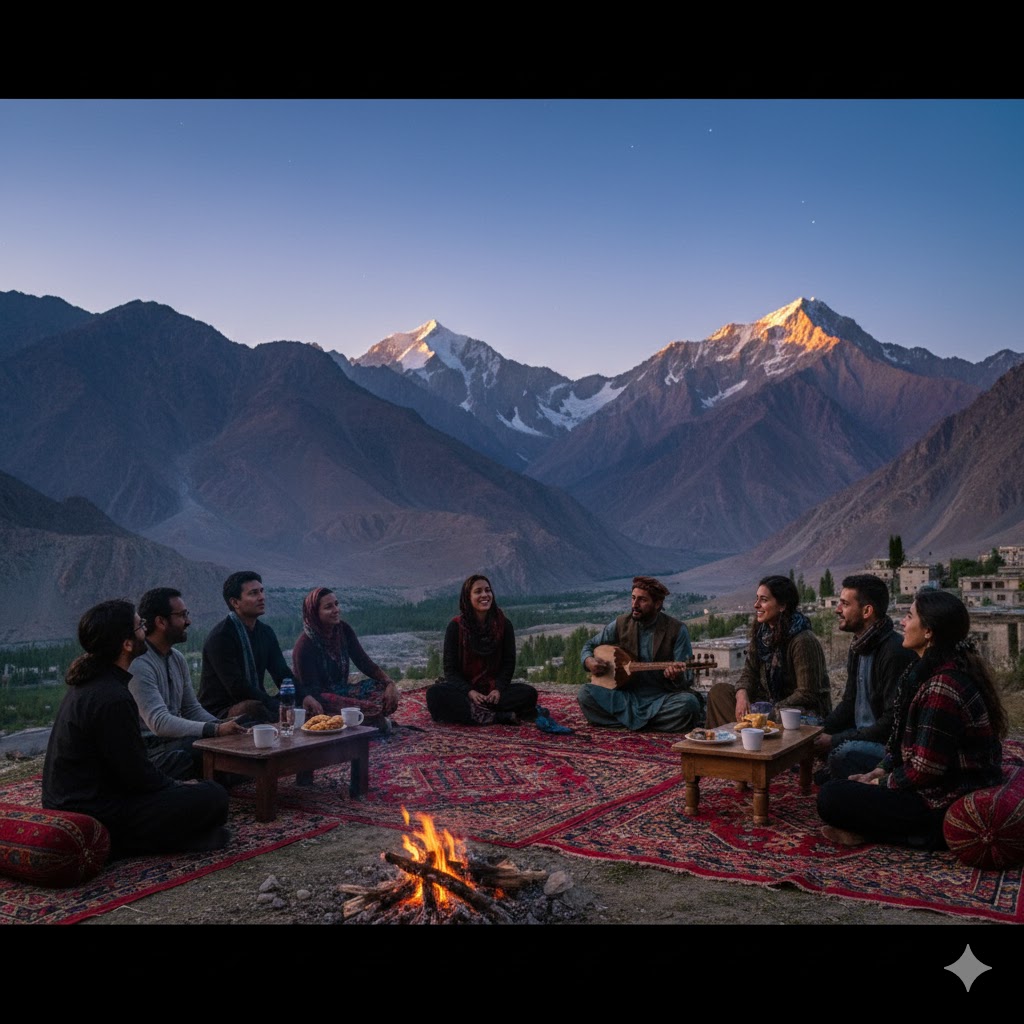
💡 15. Traveler Tips for Music Lovers
- Dress modestly when attending shrine performances or Urs festivals.
- Carry cash, as smaller events rarely accept digital payments.
- Ask permission before photographing musicians — respect is key.
- Stay hydrated during outdoor music festivals.
- Engage with locals — every folk artist has a story that enriches your journey.
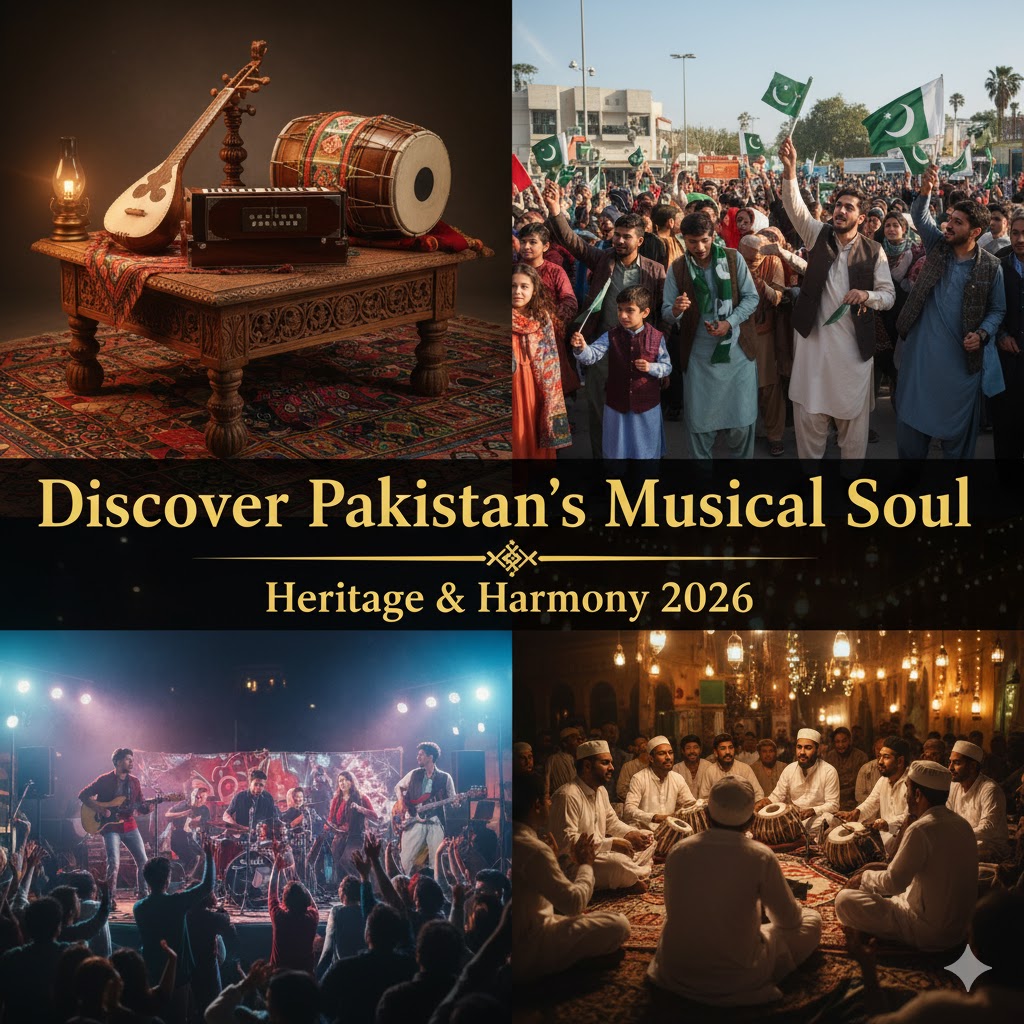
Pakistan’s Living Music Legacy
🎵 1. Punjab’s Soulful Sounds – From Qawwali to Folk Echoes
Punjab’s music forms the heart of Pakistan’s emotional rhythm. Known for its dhol beats, energetic bhangra, and soulful qawwali, it mirrors the people’s passion and resilience.
Sufi shrines like Data Darbar (Lahore) and Shrine of Baba Farid (Pakpattan) resonate with qawwals who perform every Thursday, keeping centuries-old traditions alive. Artists like Nusrat Fateh Ali Khan and Abida Parveen gave Punjabi qawwali global fame, blending spirituality with musical ecstasy.
Modern revivalists such as Ali Sethi and Farhan Saeed fuse folk poetry with electronic music, creating a modern wave that attracts young audiences back to their roots.
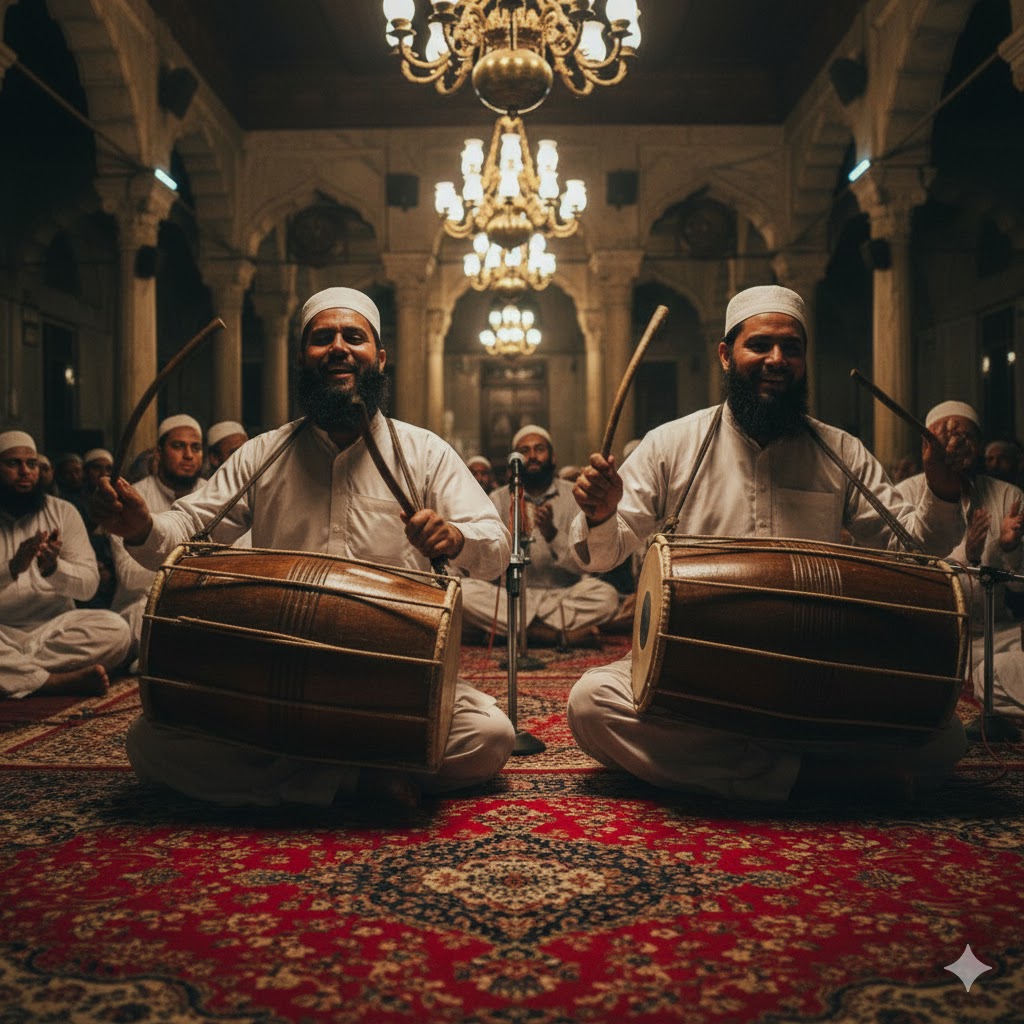
🌾 2. Sindh’s Melodic Spirit – The Land of Shah Latif’s Verse
Sindh’s music heritage is deeply poetic, tied to the verses of Shah Abdul Latif Bhittai and the stories of love and devotion in his “Shah Jo Risalo.”
In Bhit Shah, the Shah Latif Cultural Complex hosts weekly performances of Waee music — sung with the traditional instrument tambura, producing hypnotic, meditative tones.
The haunting melodies of Allan Faqir and Mai Bhagi immortalized Sindhi folk identity, while the Moomal-Rano and Sassi-Punnu ballads still echo across Thar’s dunes.
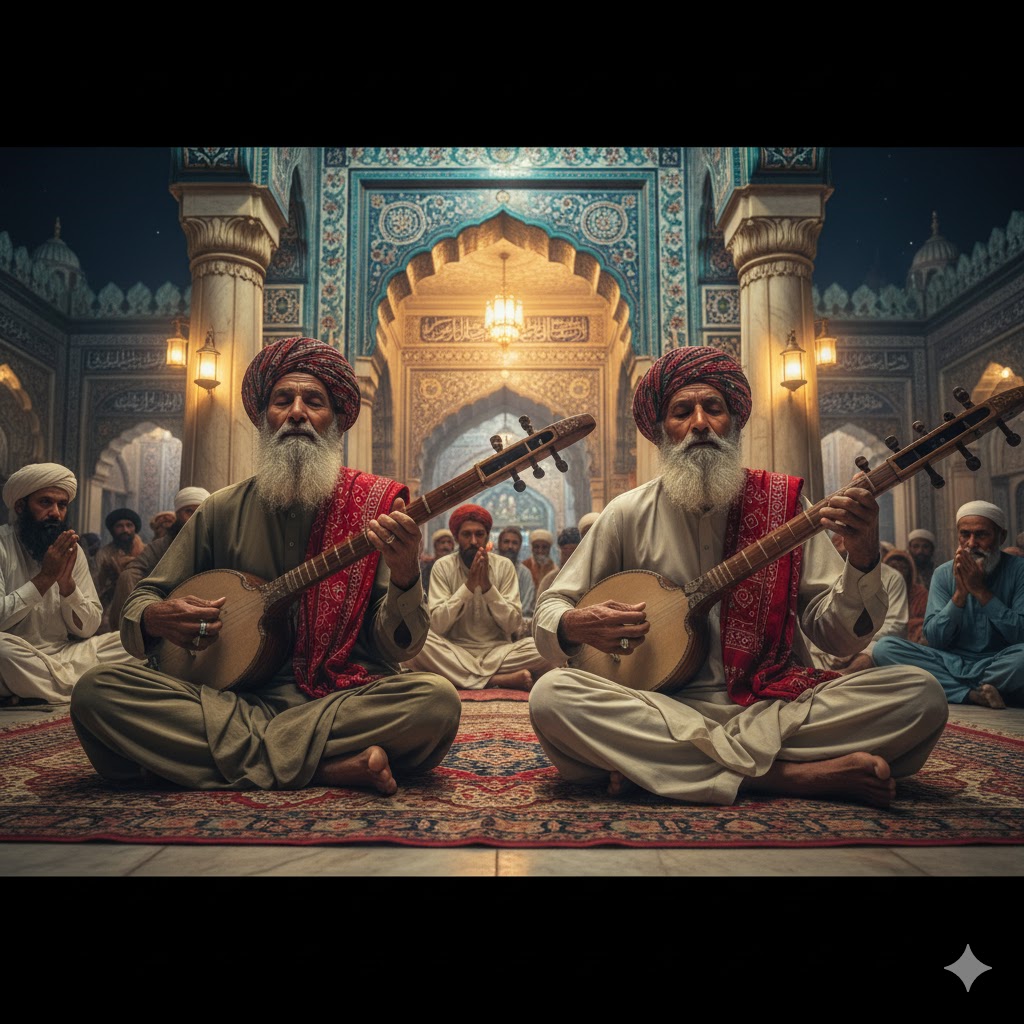
🏔️ 3. Khyber Pakhtunkhwa – The Land of Rabab and Courage
Khyber Pakhtunkhwa’s music tells stories of honor, love, and bravery. The rabab, a wooden lute-like instrument, is central to Pashto folk tradition.
In cities like Peshawar and Swat, local gatherings known as Hujras host live music evenings, where poets and singers share tales of ancestral pride.
The legendary Sardar Ali Takkar and Gul Panra have carried Pashto music to international stages, balancing modern sounds with traditional charm.
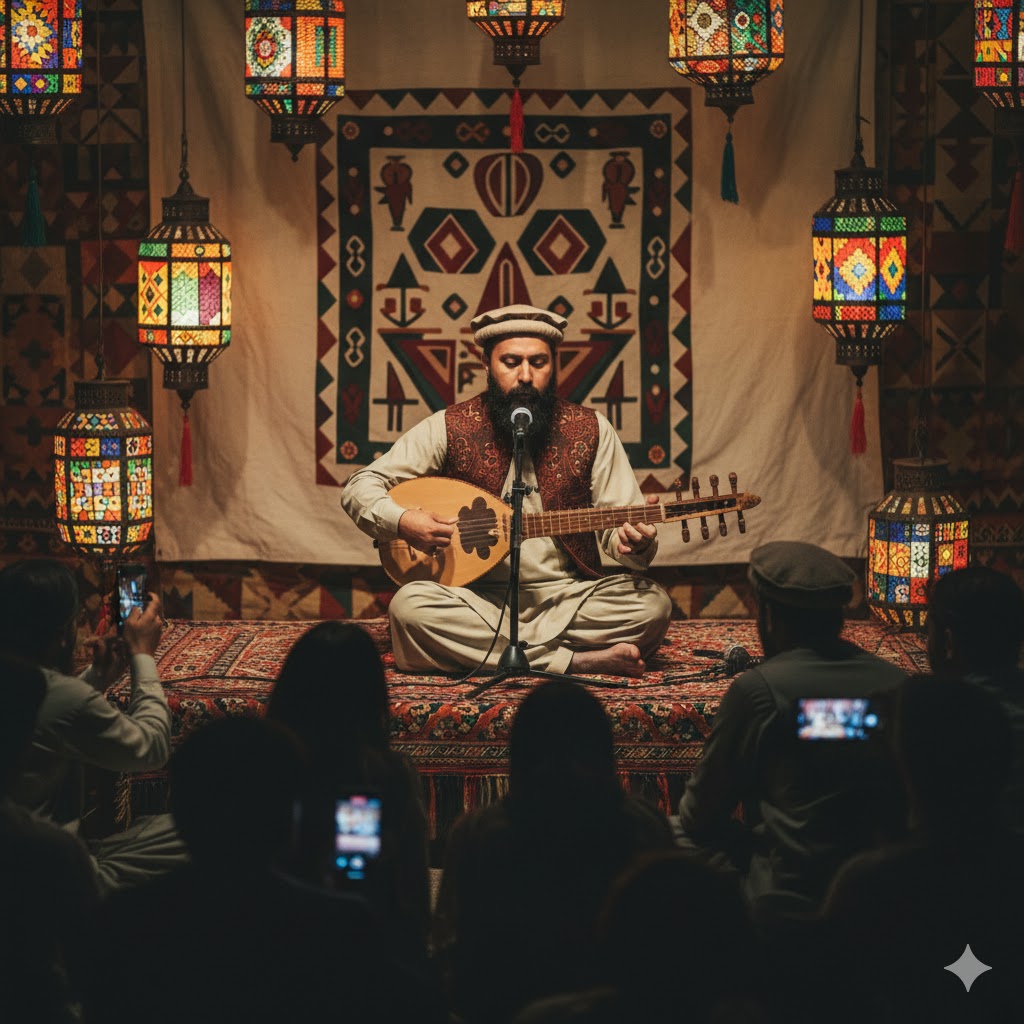
🏜️ 4. Balochistan – Desert Tunes and Lyrical Legends
Baloch music, with its long, dramatic rhythms and poetic storytelling, reflects life in vast deserts and rugged mountains.
The Soroz and Benju are signature instruments that accompany epic ballads of love and war.
In Makran and Gwadar, local festivals feature performances under open skies, symbolizing freedom and resilience.
Noor Surriya and Haneef Baloch continue the tradition, inspiring young artists to rediscover regional pride through melodies.
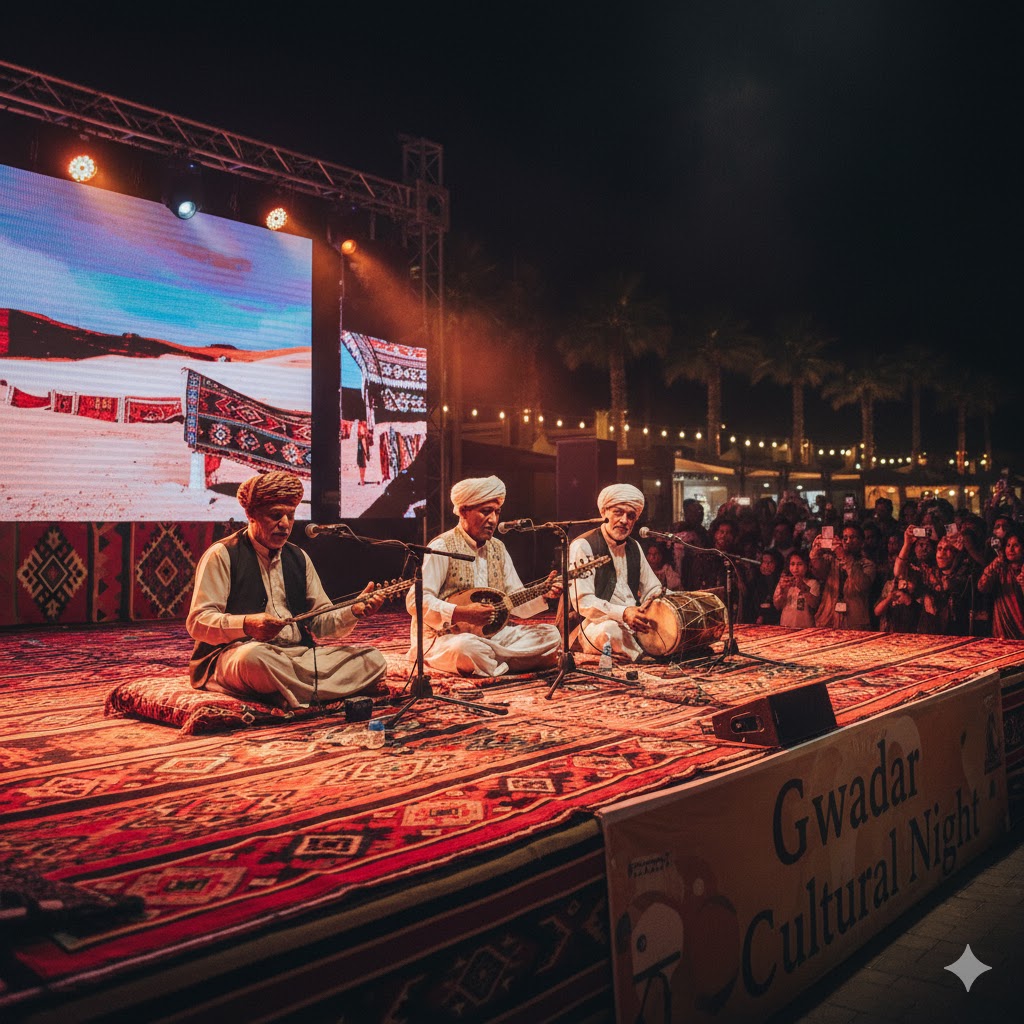
🏞️ 5. Gilgit-Baltistan – Music of Mountains and Mysticism
In the northern valleys, music harmonizes with nature. The sound of the daman drum and sitar echo through the Hunza and Skardu mountains.
Traditional songs mark celebrations like Navroz and Ginani, symbolizing gratitude for harvests and unity.
Local bands like Khumaariyaan and The Pamiri Collective have brought these ancient sounds into global limelight, blending them with modern world music.
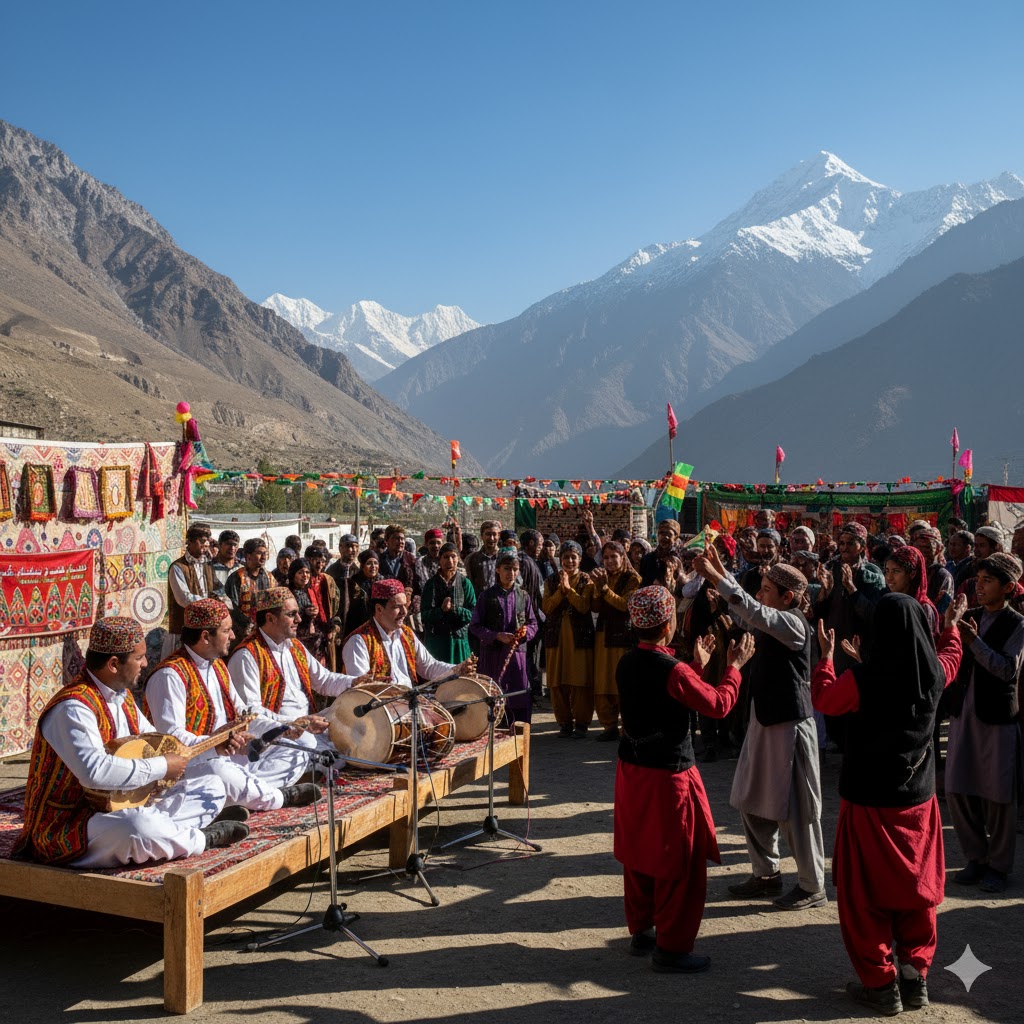
🎧 6. The Revival: Coke Studio & Beyond
Since 2008, Coke Studio Pakistan has revolutionized traditional music, connecting folk with pop, Sufi, and electronic genres.
Performances such as Tajdar-e-Haram, Pee Jaon, and Afreen Afreen have reintroduced classical instruments to new audiences.
Its role in preserving regional languages — from Brahui to Shina — makes it a digital museum of sound.
Other revival platforms include Vasl Artists Collective and Tabeer Music Project, fostering cultural collaboration and training.
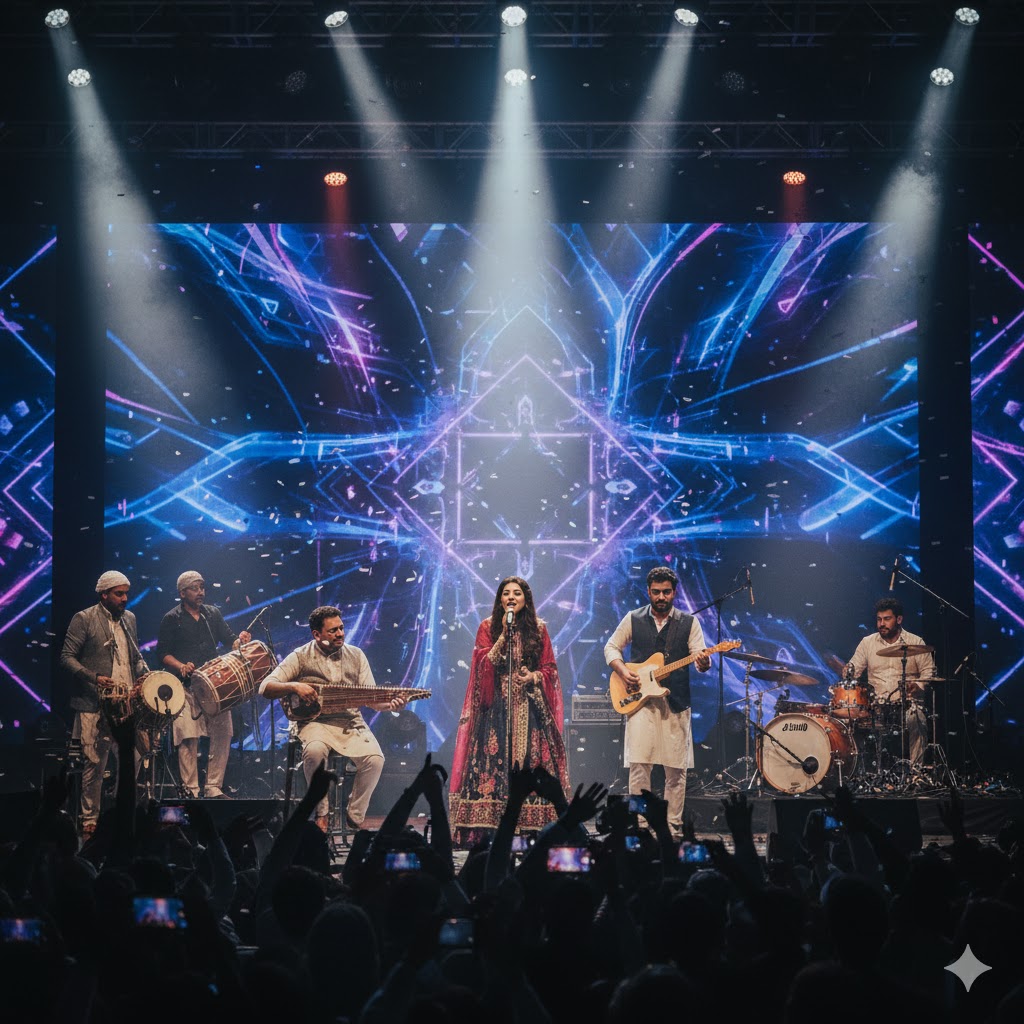
🎤 7. Iconic Artists Who Defined Pakistan’s Music Identity
| Artist | Genre | Legacy |
|---|---|---|
| Nusrat Fateh Ali Khan | Qawwali | Global ambassador of Sufi music |
| Abida Parveen | Sufi, Folk | Known as the “Queen of Spiritual Music” |
| Mehdi Hassan | Ghazal | Voice of love and melancholy |
| Farida Khanum | Classical | Iconic performer of poetic ghazals |
| Vital Signs | Pop | Pioneers of modern Pakistani pop culture |
| Junoon | Sufi Rock | Introduced spiritual rock to South Asia |
🎶 8. Festivals Celebrating Music Heritage
- All Pakistan Music Conference (Lahore) — annual classical music festival since 1959.
- Lahooti Melo (Hyderabad) — focuses on Sindhi heritage and contemporary creativity.
- Music Mela (Islamabad) — celebrates modern fusion and indie talent.
- Sufi Night Karachi — a soulful evening celebrating poetry and devotion.
Each festival merges old and new, creating bridges across generations and languages.
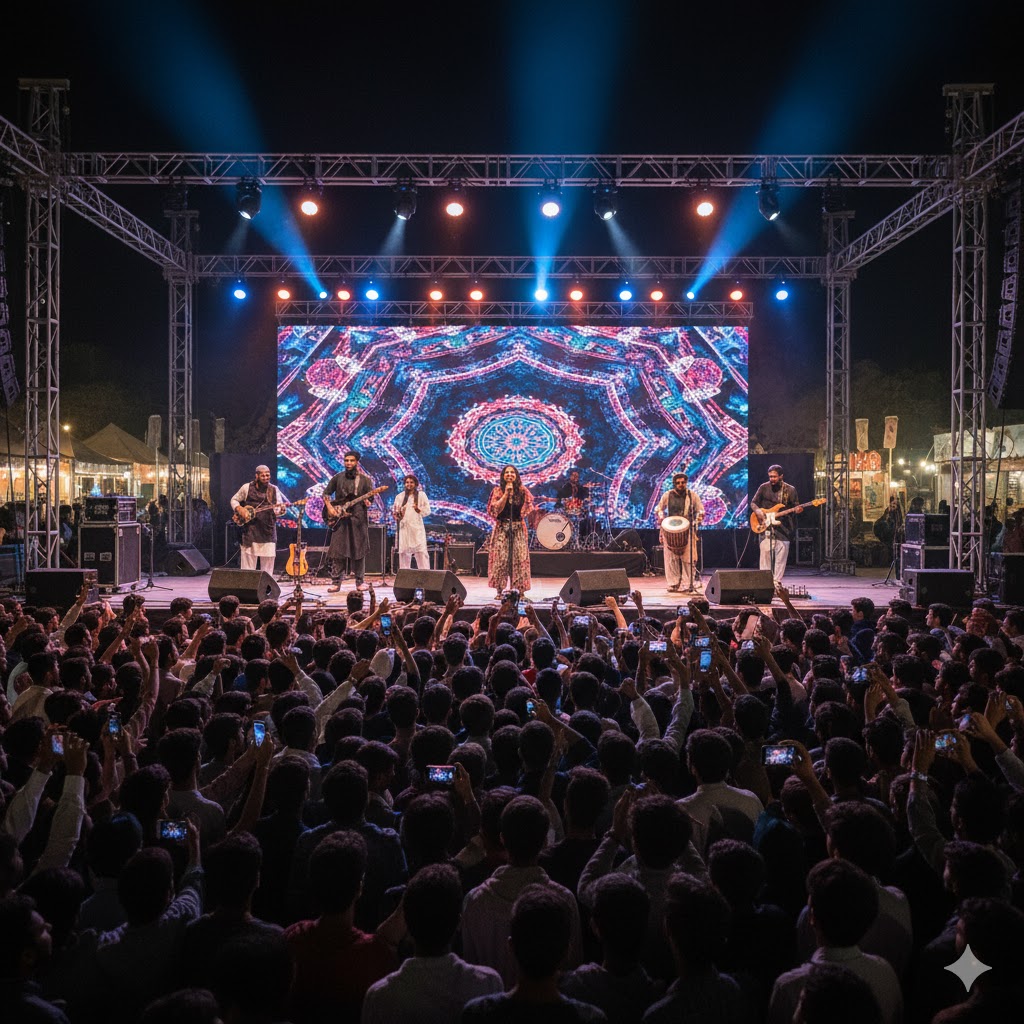
🕌 9. Heritage Institutions & Preservation Efforts
- National Institute of Folk & Traditional Heritage (Lok Virsa, Islamabad): hosts archives and live shows of regional music.
- National Academy of Performing Arts (NAPA, Karachi): trains youth in classical and modern music.
- Punjab Institute of Language, Art & Culture (PILAC): promotes Punjabi poetry and music documentation.
These institutions sustain Pakistan’s sonic diversity, ensuring its continuity for future generations.
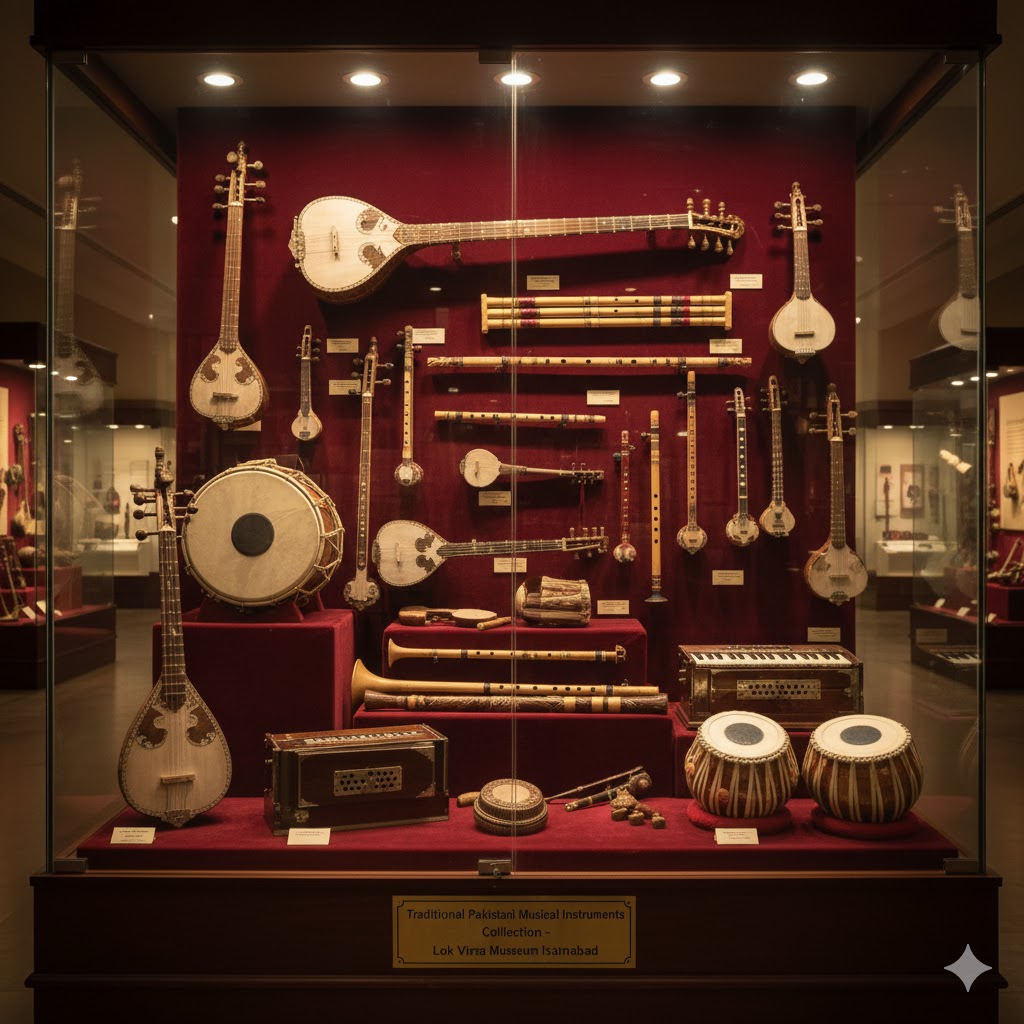
💡 10. Tips for Music Travelers
- Visit shrines on Thursday evenings for authentic qawwali experiences.
- Attend Lahooti Melo or Music Mela for multi-regional exposure.
- Explore village fairs and folk festivals for raw, unfiltered performances.
- Carry ear protection at high-decibel dhol performances.
- Record responsibly — always seek artist consent.
FAQs — Pakistan’s Music Heritage (2026 Edition)
Q1. What is the most famous form of music in Pakistan?
A1. Sufi music, especially qawwali, is Pakistan’s most iconic form, known for its spiritual power and poetic depth.
Q2. Where can tourists attend live traditional music events?
A2. Major events are held at Lok Virsa (Islamabad), Lahooti Melo (Hyderabad), and Sufi Shrines across Punjab and Sindh.
Q3. Who are the top legends in Pakistani music history?
A3. Nusrat Fateh Ali Khan, Noor Jehan, Abida Parveen, Mehdi Hassan, and Junoon have defined Pakistan’s musical identity worldwide.
Q4. Are there music tours available in Pakistan?
A4. Yes, some tour companies now offer “Cultural Sound Trails”, covering shrines, festivals, and music heritage museums.
Q5. What instruments are unique to Pakistan?
A5. Rubab, Suroz, Algoza, Chimta, and Dhol are among Pakistan’s traditional instruments, each linked to a regional sound.
Q6. Can foreigners attend shrine qawwali nights?
A6. Absolutely. Visitors are welcome as long as they follow local customs and dress appropriately.
Q7. When is the best season for music festivals in Pakistan?
A7. November to April is ideal, as most major festivals — especially Lok Virsa Mela — take place during cooler months.
Q8. How is modern Pakistani music evolving today?
A8. Through platforms like Coke Studio, Nescafé Basement, and online collaborations, young artists are blending folk with pop, rock, and electronic genres.
ALT Text: Tourists attending Pakistan music heritage tour interacting with folk artists at cultural pavilion Islamabad.

